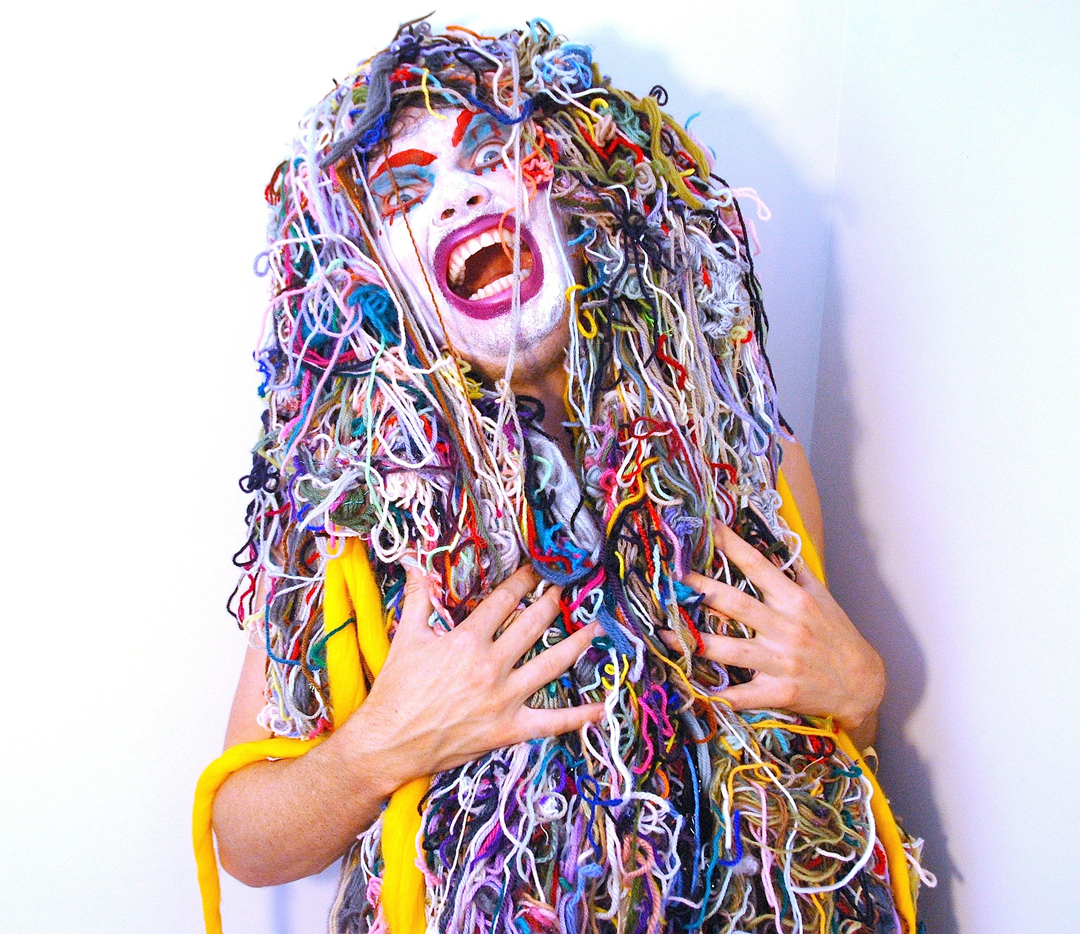
Talking Textiles with Paul Yore
Stitching, sewing, knitting and knotting - Vitamin T artists tell us how and why they do what they do
Paul Yore's visual cacophony of imagery juxtaposes penises, sex acts and slogans alongside popular culture references and world political figures. The Melbourne-based textile artist , who's featured in our new book Vitamin T: Threads and Textiles in Contemporary Art, uses embroidered appliqué to fabricate lewd, garish and politically astute works that critique the upheaval and dysfunction of contemporary society.
His technical skills are borrowed from the tradition of handicraft, while his subject foregrounds denizens of the twenty first century such as Donald Trump and Osama Bin Laden.
Compositionally, he draws on the pictorial language of tapestry and painting, yet his renditions also refer to the tradition of quilt-making by deploying cutting and piecing. Yore favours the portability of stitching in his Melbourne-based studio, but he also says that he likes to work in bed, "watching trash television or listening to music". Here, the Vitamin T: Threads and Textiles in Contemporary Art featured artist tells us why textile art is big right now and muses on the perils of pricked fingers and why it's best to keep textile art away from jealous husbands. . .
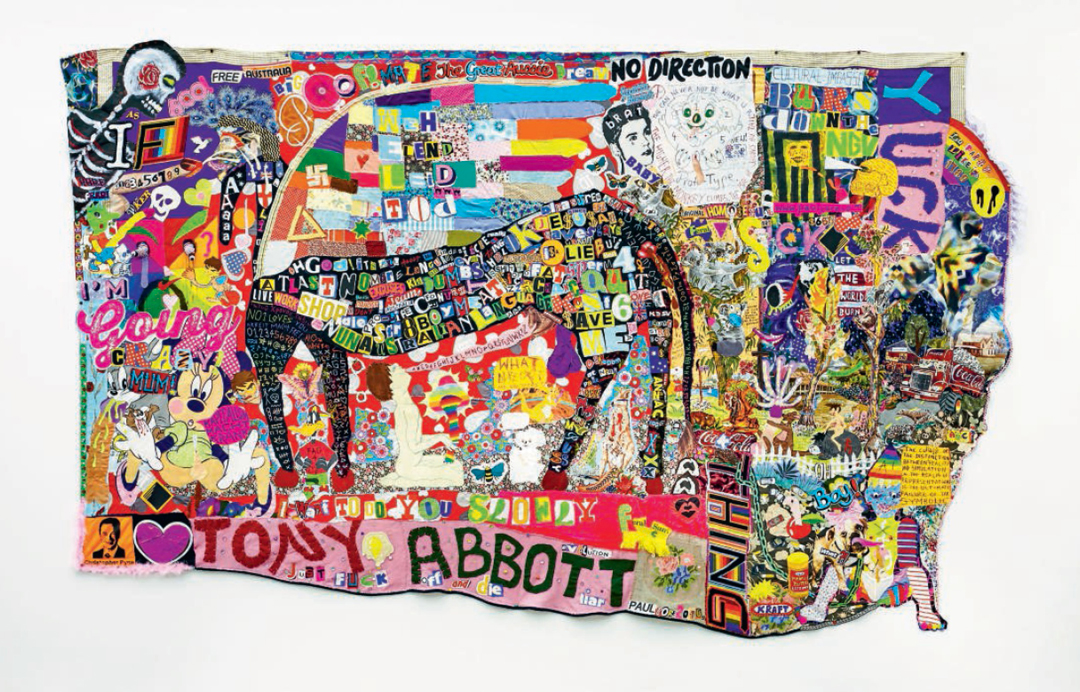
Who are you and what’s your relationship with threads and textile art? I’m an anarchist, bitch, cynic, drag-queen, exhibitionist, fanatic, generalist, heretic, idealist, joker, kinky, liberationist, misanthrope, nudist, obsessive, pantheist, queer, realist, Sagittarius, trashy, uncut, vegan, wiccan, X-rated, yokel & zoophile.
For me, making textiles is nothing short of a survival mechanism, a form of therapy, a mode of resistance, a vehicle for seeking actuality in an ostensibly meaningless world.
What part does the tactility of the material play in your desire to work with it? The tactility of textiles has a strong connection to the body. As my work explores, in part, the relationship between mass-produced images, forms and materials and the implications of these in determining queer ways of being, this bodily connection is really important. I think touch is an innate, intuitive form of intelligence, that almost seems to sit outside of the learned, arbitrated cultural framework that governs the other senses. A material that so readily lends itself to corporeality is an obvious medium for queer art.
Strangely, this tactility also has a uniquely temporal quality, as it is bound up in the taxing process of stitching, and the very real and physical transference of energy over concentrated periods of time that takes place therein. I believe perceivable residues of this energy are embedded in all textiles.
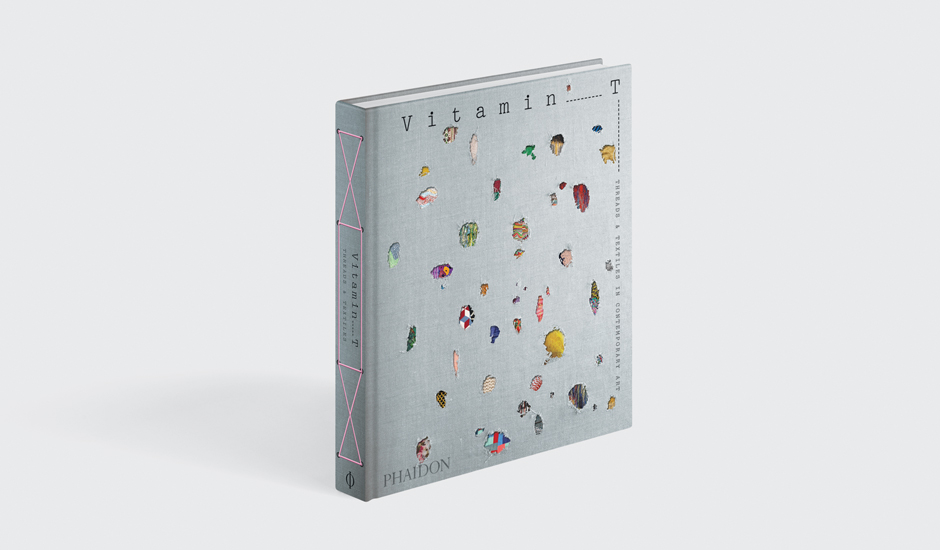
Why do you think there’s an increased interest around textile art right now? The way I see it, the world is being held hostage by power-hungry sociopaths– imperialist multinational conglomerates, right-wing demagogues and impotent faddish liberals - who are all conspiring to inflict their terroristic vision onto the entire biosphere and its human and non-human inhabitants. In this context, a revival and renewal in textiles – a medium of great humanity and urgency – seems necessary. I see an obvious link between the welcome resurgent visibility of radical feminist and queer politics and the reappraisal of textiles, the medium that has so often given form to these concerns in protest banners, AIDS memorial quilts and a whole canon of counter-cultural productions.
Furthermore, in the age of dehumanising, alienating and increasingly mechanised forms of mass production so prevalent today, a return to that which is idiosyncratic and handmade seems particularly vital, forming a counterpoint to thoughtless consumption and the deluge of flattened, digital images that constitute screen culture.
Everyone uses textiles in their daily life, does that help or hinder their standing as a fine art material? In the recent past, I think the status of textiles as merely ‘applied arts’ and the simplistic connection with domesticity, and therefore femininity, hindered the acceptance of textiles within academic, male-dominated ‘fine art’ circles. But it is these exact qualities that lend textiles a sense of immediacy, accessibility and unconventionality today. Textiles are comforting, sensuous, and bodily; they are one of the first materials a human being is generally exposed to after birth, if they are wrapped in a blanket. Considering that weaving probably pre-dates painting, pottery and sculpture, humans clearly have a primal connection to that which is woven, and I think this greatly aids the status of textiles as a medium that connects the past with the future in a very direct and powerful way.
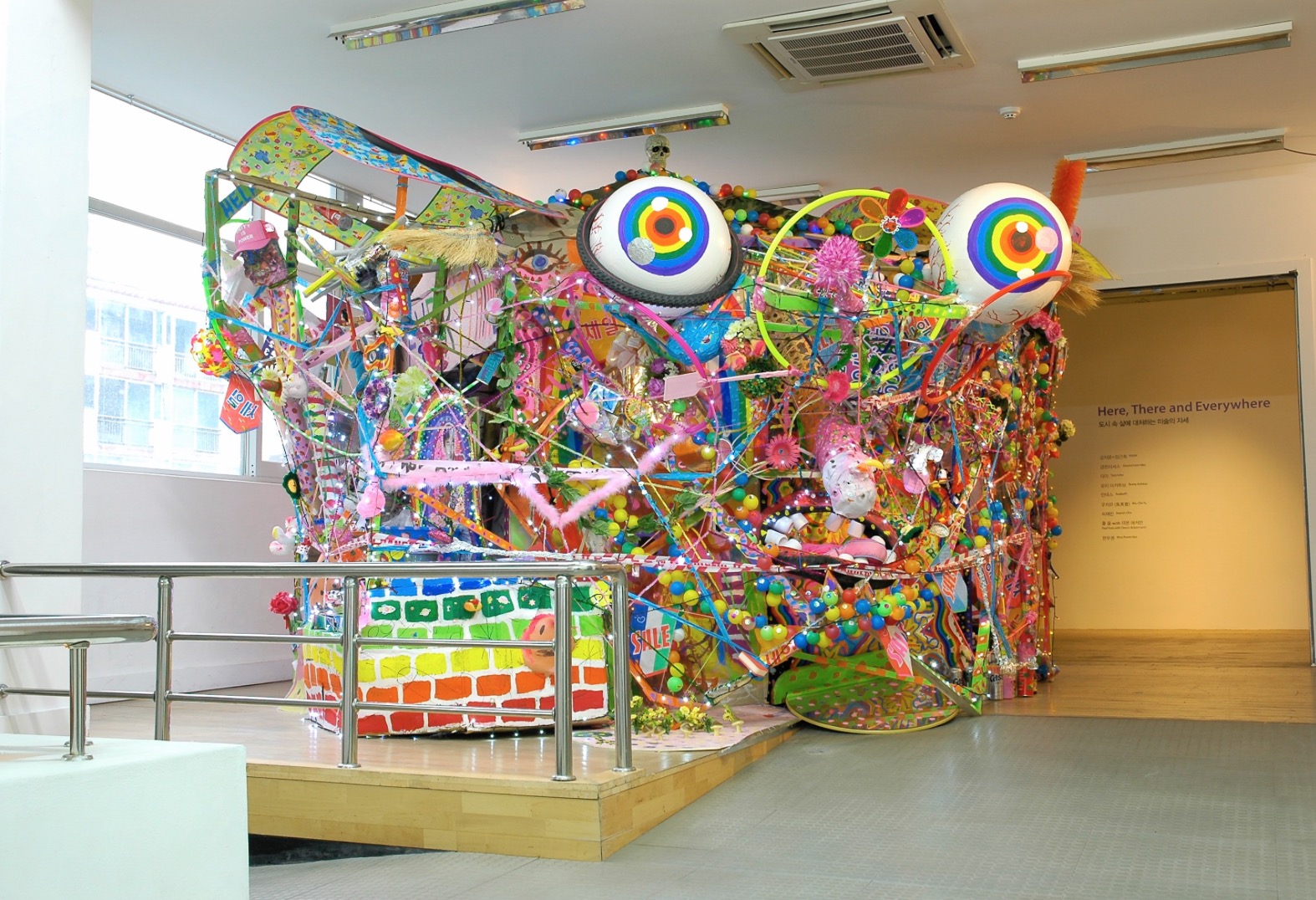
__Whose textile art do you admire? __ I would cite the late Australian artist, performer and fashion icon Leigh Bowery as a big influence. His hand-made outfits attracted the ire of traditionalists, and he was a huge personality in the raging club scene in London in the socially turbulent 80’s. Judy Chicago’s seminal The Dinner Party (1979) is also a work of continuing importance, a veritable monument to craft-as-critique. Further, like many textile artists, I draw never-ending strength and stimulus from a diverse array of transhistorical textile work, often made in anonymity or obscurity, be it medieval tapestries, rococo fabrications, embroidered Victorian samplers, Amish quilts or hand sewn protest banners of the recent past.
What are the particular challenges and rewards of working in this medium? I think textile artists must naturally be masochists! The perils of the needle are many, so you have to be patient and resilient. I once pushed the blunt end of a thick sewing needle through my finger trying to sew a particularly tough piece of material – I was on antibiotics for weeks afterwards listening to Alanis Morissette on repeat and feeling very sorry for myself indeed. Believe it or not, there are some really gratifying aspects in spending 16 hours of each day hand sewing pieces. The energy release is better than any drug, quite absorbing and psychologically restorative. It is also a flexible and informal medium to work with as you can do it on your lap in front of the TV or take it with you on the bus.
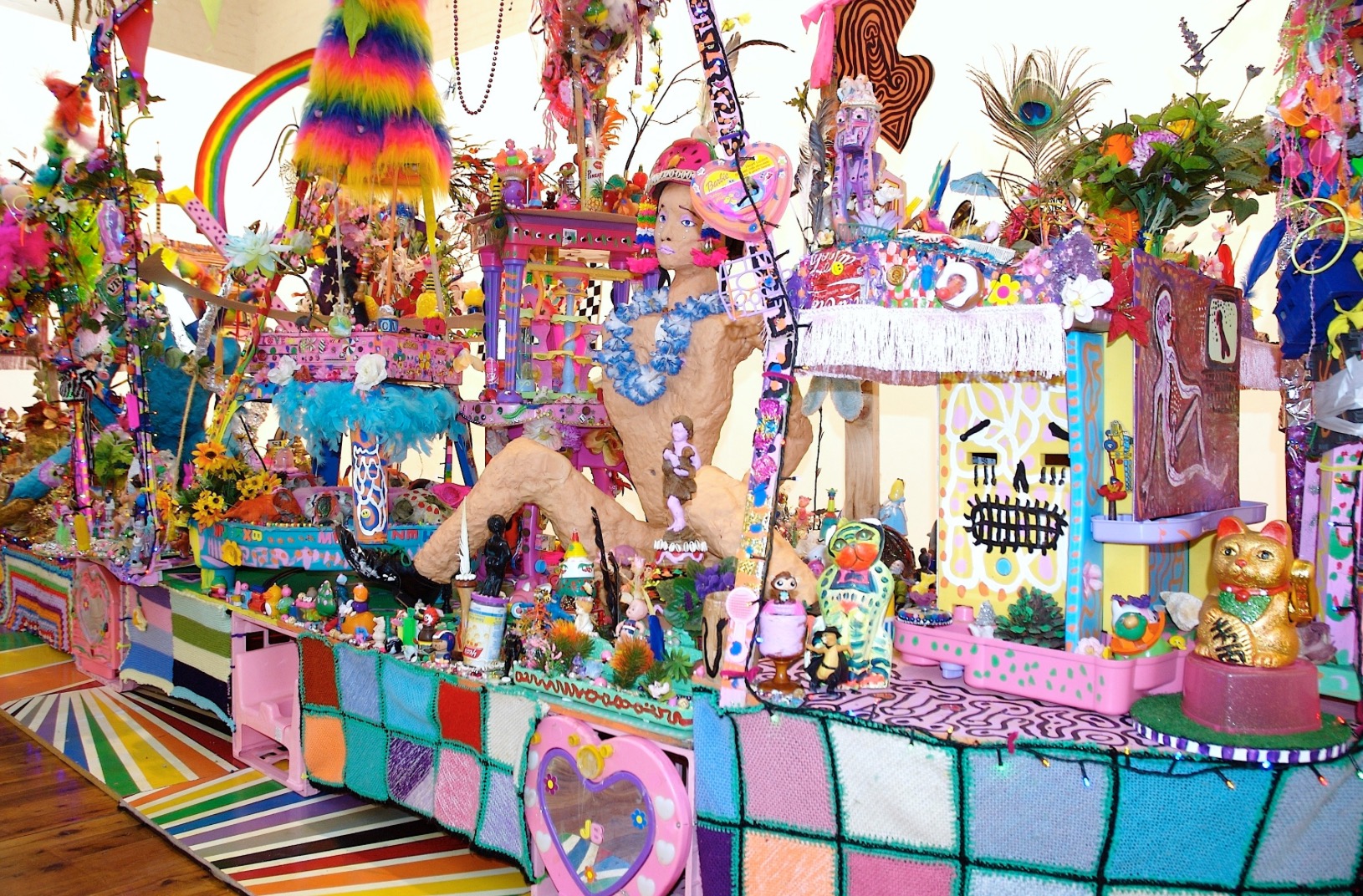
What is specific about the long term care of textile art for a collector? Some natural fibres can be quite fragile, subject to dust and mould, and can also fade due to light-sensitivity. I use a lot of recycled offcuts of synthetic materials, because generally the colours are lurid and the fabrics seem more durable. My pieces will last forever so long as they are kept away from naked flames, cats and jealous ex-husbands . . .
What’s next for you, and what’s next for threads and textile art? I’m showing some works at the forthcoming Rijswijk Textile Biennale in The Netherlands later this year, which I’m super excited about. Looking towards the future: textiles are taking over the world, so bring on the revolution I say. As a queer artist, I’m all about pushing ideas and forms to the edge, trying new things and experimenting. Australia is very far away from everywhere, so I am always looking for allies, art-friends, sugar-daddies and interesting galleries to show with internationally. I can give you what you want so hit me up!
You can see more of Paul's work here Instagram: @paul.yore and here. Website: www.paulyore.com
Vitamin T is a global survey of more than 100 artists, chosen by art-world professionals for their work with threads, stitching, and textiles
Celebrating tapestry, embroidery, stitching and textiles as used by visual artists worldwide, Vitamin T is the latest in the celebrated series in which leading curators, critics, and art professionals nominate living artists for inclusion. Vitamin T is a vibrant and incredibly timely survey – the first of its kind.